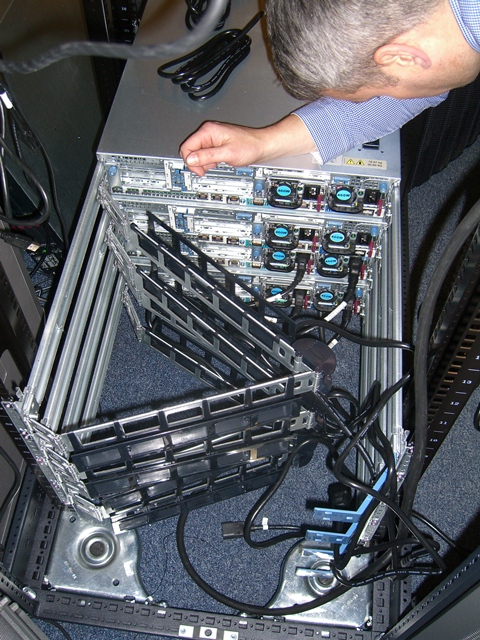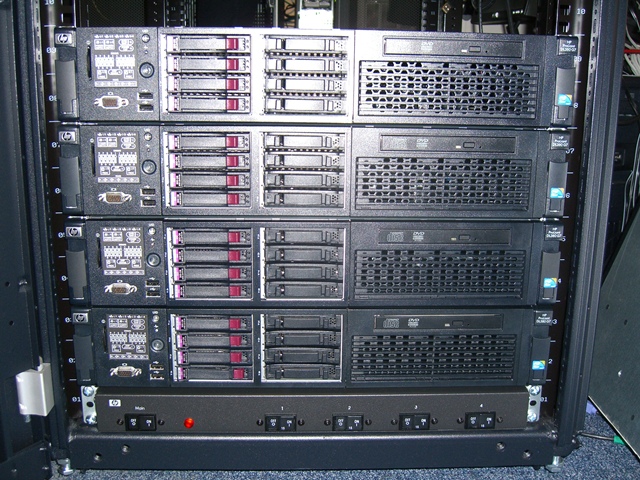We finally started upgrading the domain controllers (DCs) here at Translink, which are currently running Windows Server 2003, to Windows Server 2008 R2. Yay! As I told you in a previous post, this is necessary for the Exchange 2010 migration to start.
On Thursday after lunch Rory, a server technician working for Northgate, came to our office to support us with the migration.
First we set up a temporary (virtual) DC, moved the services and copied the FSMO roles to it.
Now we could start upgrading the DCs. As Windows Server 2008 R2 doesn’t allow an in-place upgrade from Windows Server 2003, we had to do a complete new installation. So we demoted the first DC to a normal member server and then removed it from the domain. Now we could install the new operating system, get a cup of tea, do some basic configurations, join the freshly installed server to the domain and run dcpromo to make it a DC again. Of course we repeated this procedure for all DCs, one at a time.
Finally we moved the FSMO roles back to the DCs they were initially running on, moved the services … and Bob’s your uncle! 😉
In the end we left the office at approximately 19:30.

